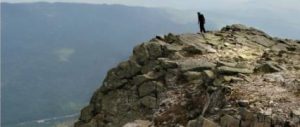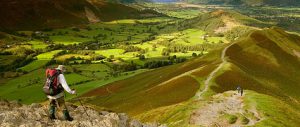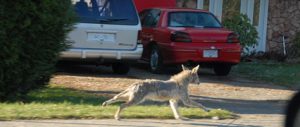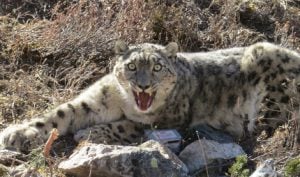Humans became masters of the planet for a startling reason: our love of animals gave us unsurpassed power over nature. This is claim of a leading American anthropologist who says our prehistoric ancestors’ intense relationships with other creatures – including those we hunt, keep as pets and use for food – propelled humanity towards global domination.
Interacting with animals on an intimate basis led humans to develop sophisticated tools and evolve enhanced communication skills, including language itself, Pat Shipman of Pennsylvania State University in the United States told the Observer. Animals also taught us that others – even other species – have emotions, needs and thoughts, while they also helped us to evolve the vital skills of empathy, understanding and compromise.
"The longest and enduring trend in human evolution has been a gradual intensification of our involvement with animals," she added. "But now our world is becoming increasingly urbanised and we are having less and less contact with them. The consequences are potentially catastrophic."
Shipman traces humanity’s animal connection to the period 2.5 million years ago when our hominid ancestors first made tools. These crafted pieces of stone still litter sites in eastern Africa, including the Olduvai Gorge in Kenya, and bear testimony to the mental transformation in our ancestors’ brains.
"These apemen didn’t just pick up stones and use them to hammer or pound prey or plants," said Shipman. "They shaped those rocks for specific purposes. They had a mental image of the kind of tools they needed and created them by chipping away at a large piece of stone until they got what they wanted."
And what they wanted were tools for cutting up carcasses. In other words, the sharp stone flakes spread over Olduvai were not used primarily as weapons to kill animals or to hack down plants, but to process dead animals that had already been brought down by other carnivores. Apemen had begun to scavenge for meat from carcasses of prey killed by leopards, cheetahs and other carnivores. Armed with sharp blades, they discovered, they could cut off chunks of antelope or deer and escape quickly before being eaten themselves by an enraged lion.
And that was the crucial point that began our special relationship with the animal kingdom, said Shipman, whose book The Animal Connection was recently published. "Until that point, we had been a prey species. Carnivores ate us. Then we began scavenging before going on to hunt on our own behalf. Meat provided our ancestors with a wonderful, rich source of sustenance. However, scavenging for it left us in a very vulnerable position. We were still just as likely to be consumed when confronted by a carnivore as we were to kill in our own right. To survive, we had to learn about the behaviour of a vast number of different species – the ones we wanted to kill and the ones we wanted to avoid.
"For example, we would have learned to spot when lions were preparing to mate – when a male was showing off to a female – so that we could take some its prey while it was otherwise occupied. We would have also built up knowledge about the migration of species such as wildebeest and other animals."
In the end, this expertise would have become crucial to human survival, a point illustrated in the cave paintings in Lascaux and Chauvet in France and the other caves painted by humans 20,000 to 30,000 years ago. They show us that after two million years of evolution, humans had become utterly fixated by animals.
"These paintings are stunningly beautiful and superbly crafted," said Shipman. "Sometimes scaffolding was erected in the caves. At the same time, artists went to enormous lengths to get their pigments mixed with the right binding agents and placed in exactly the right spot. And what did they depict when they got things just right? Animals, animals and more animals.
"There are no landscapes and only a handful of poorly executed depictions of humans. By contrast the paintings of lions, stags, horses, bulls and the rest are magnificent. We were besotted with animals because our lives depended on our relationships with them."
Not long after these paintings were created, the first animal was domesticated – the dog, followed some time later by the horse, sheep, goat and others. The development was crucial. In each case, humans had to learn to put themselves in the minds of these creatures in order to get them to do our bidding. In this way our senses of empathy and understanding, both with animals and with members of own species, were enhanced.
Our special relationship with animals is revealed today through our desire to have pets. "Humans are the only species on earth to have one-to-one relationships with a member of another species," said Shipman. "No other creature would waste resources on a member of another family, let alone a member of another species. But we do, and that is because we have evolved such close ties with specific animals over the millennia and because we are adapted to empathise with other creatures. It is a unique human attribute. We get so much from animals, much more than we appreciate."
Unfortunately, as society becomes increasingly urbanised those ties are being stretched and broken, added Shipman. "Our links to the animal world are precious and shouldn’t be taken for granted," she said.
https://www.guardian.co.uk/
Copyright © Guardian News and Media Limited 2011
Homepage image by edbrambley





